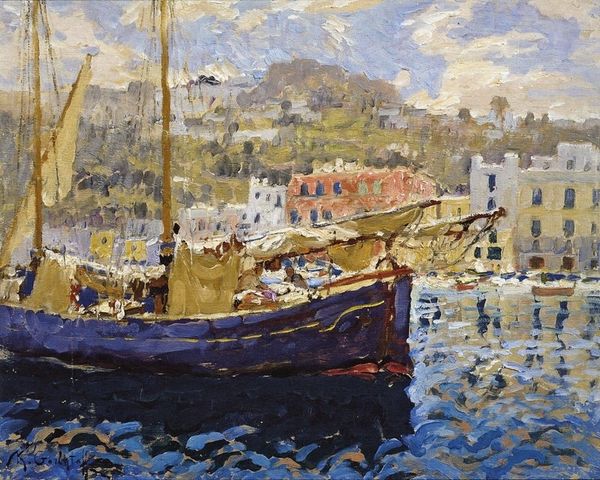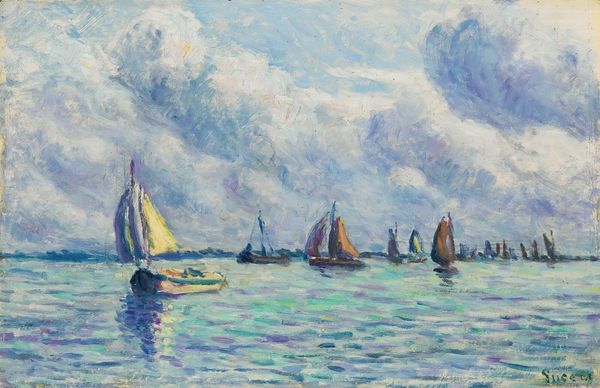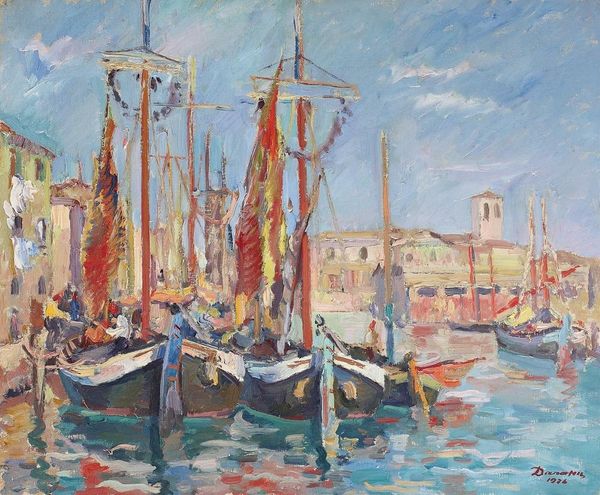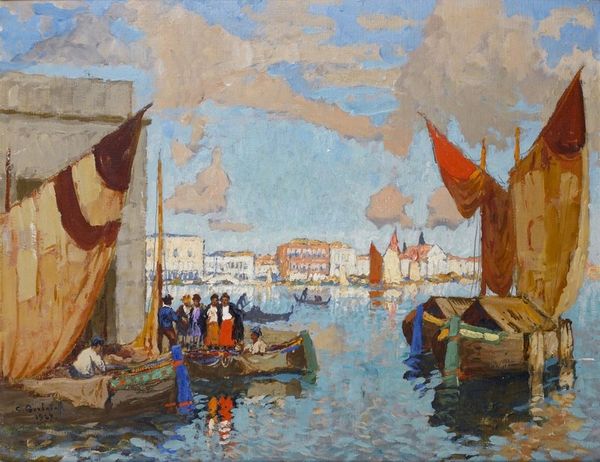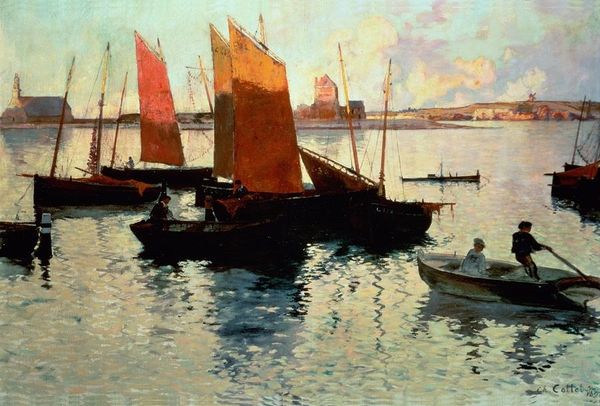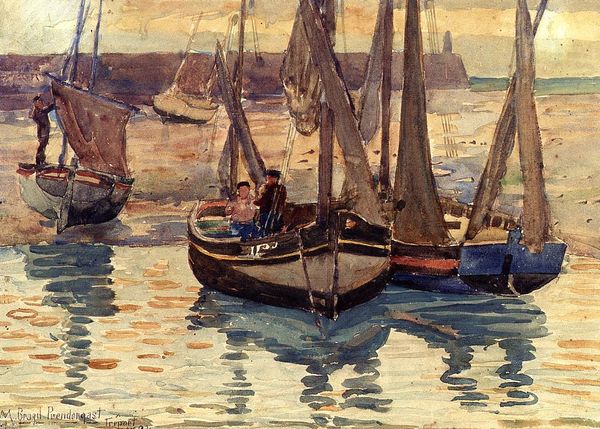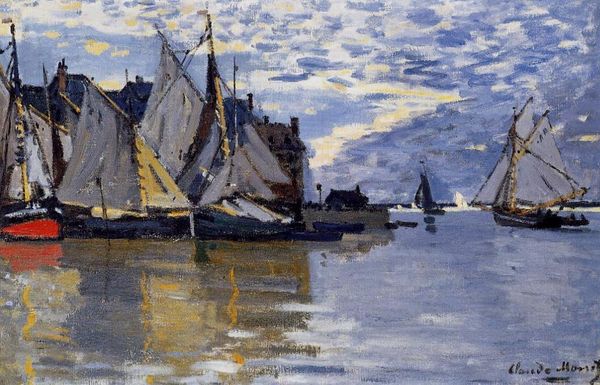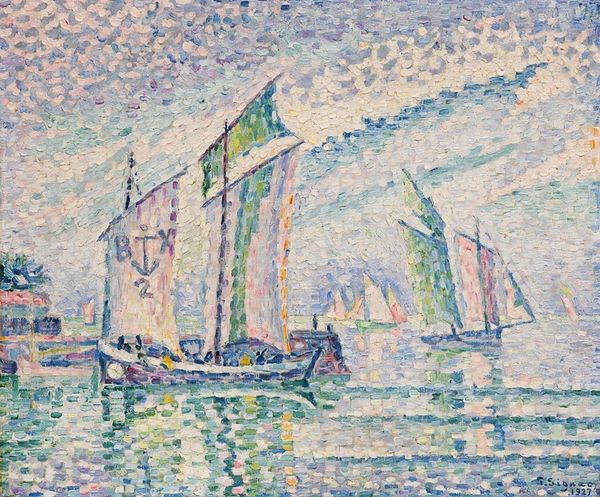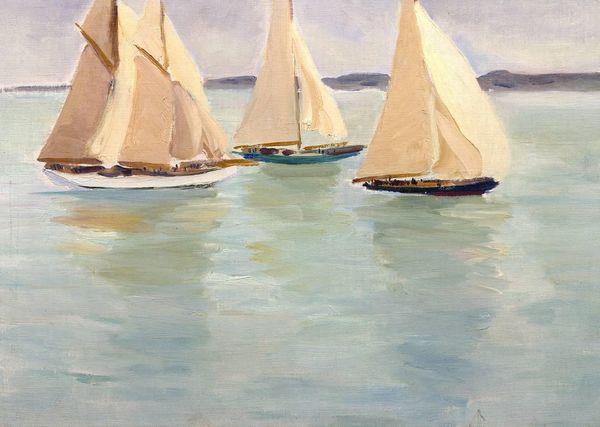
Copyright: Public domain
Editor: This is Konstantin Gorbatov's "Capri," painted in 1929 using oil paints. I'm really struck by how active the surface of the water is – it feels almost chaotic. What do you see in this piece? Curator: I am drawn to the structural elements, primarily the interplay of light and texture. Observe how the artist uses short, broken brushstrokes to capture the movement of the water. Do you notice the complementary color scheme? Editor: Yes, the blues and greens of the water really pop against the oranges and yellows of the boats and sky. Is that intentional, creating that dynamic tension? Curator: Precisely. It’s through this carefully orchestrated use of color that Gorbatov achieves a sense of visual excitement. Note also how the verticality of the masts provides a counterpoint to the horizontality of the waves, creating a balanced yet dynamic composition. What function do you think the horizon line might serve here? Editor: Hmm, it's placed rather high, making the sea seem to dominate the composition. Perhaps it emphasizes the power of nature over human endeavors? Curator: A plausible interpretation, but let's focus on the formal aspects. The high horizon line flattens the pictorial space, pushing the boats forward and emphasizing the surface quality of the painting. It draws attention to the act of painting itself, to the materiality of the oil paint. Editor: So it’s not just about what’s depicted, but *how* it’s depicted, emphasizing brushstrokes and color relationships? Curator: Exactly. The formal elements speak volumes about the artist’s intentions. Editor: I see. It's easy to get lost in the subject matter, but focusing on the structure of the painting reveals so much more. Curator: Indeed. A deeper understanding arises through focused visual analysis.
Comments
No comments
Be the first to comment and join the conversation on the ultimate creative platform.


